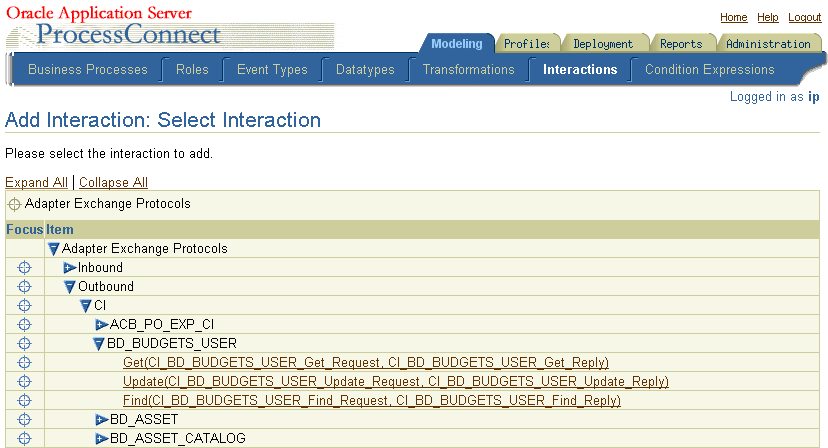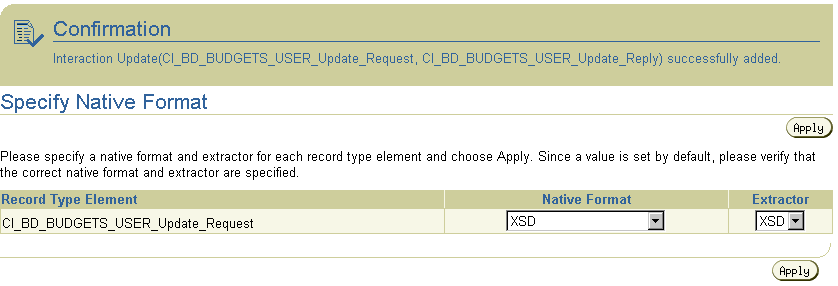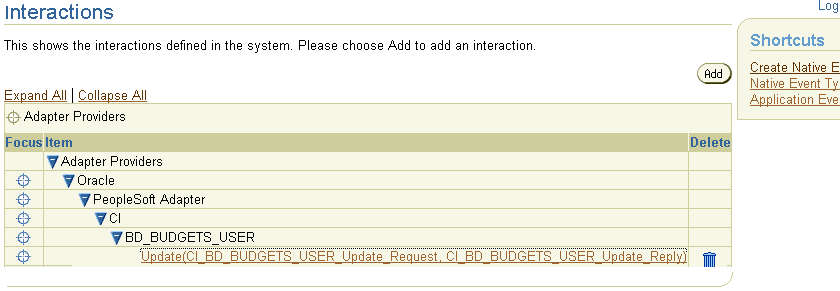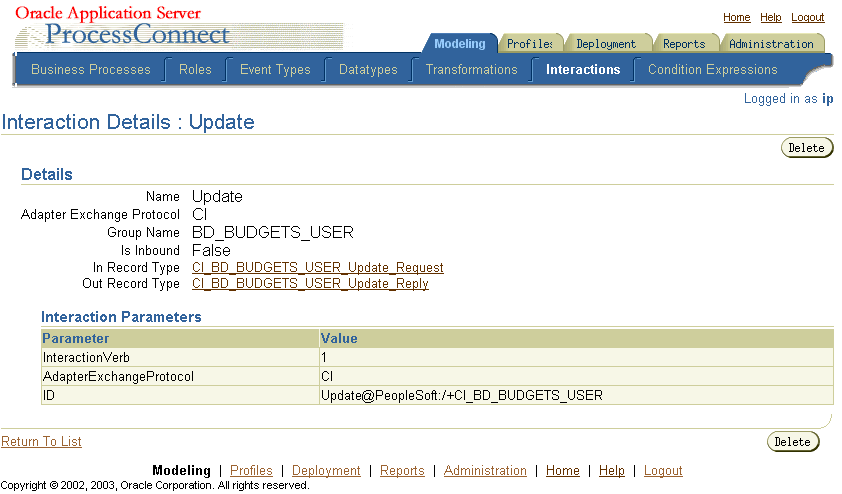10g (9.0.4)
Part Number B10298-01
Home |
Solution Area |
Contents |
Index |
| Oracle® Application Server Integration Adapter for PeopleSoft 8 User's Guide 10g (9.0.4) Part Number B10298-01 |
|
This chapter describes how to configure Oracle Application Server ProcessConnect to access Component Interfaces in a PeopleSoft system.
This chapter discusses the following topic:
After defining a delivery channel for a PeopleSoft system, you can add interactions. Follow these instructions to add a Component Interface as an interaction in Oracle Application Server ProcessConnect.
|
See Also:
Oracle Application Server ProcessConnect User's Guide for details about interactions in Oracle Application Server ProcessConnect |
The Add Interaction: Select Interaction page displays the Component Interfaces that you can access.

When you open the CI folder you can view all of the available Component Interfaces in your PeopleSoft system. A Component Interface declares the set of interactions that a Component Interface supports, but it does not implement the behavior.
Oracle Application Server ProcessConnect exposes standard interactions, Create, CreateEx, Get, Find, Update, and UpdateEx. User-defined interactions can also be exposed in the same manner as the standard interactions. Expanding the Component Interface displays the interactions. An interaction is the function of Component Interface that is capable of performing an operation.
Expanding the Component Interface displays a long list of Component Interfaces. Each Component Interface is similar to data than a real object with behavior. Therefore, there is a set of methods for each Component Interface; however, not every Component interface has all supported methods.
The Add Interaction: Review page displays the details. For an Outbound selection there is an InRecord Type and an OutRecord Type.
The Confirmation screen appears, allowing you to specify the Native Format of the request.

The Confirmation screen appears, allowing you to specify the Native Format of the reply.

On completion, the new interaction appears in the Interactions list.

You can click the interaction link for a complete view of the interaction details.

|
|
 Copyright © 2003 Oracle Corporation. All Rights Reserved. |
|